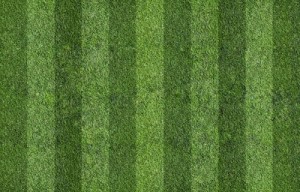 When it comes to properly mowing the lawn, there are plenty of misconceptions and even more questions that typical homeowners need to answer in order to create a professional, durable outdoor space. The good news is that lawn care, though it requires some attention to detail, is still pretty easy for the typical homeowner. With a few careful considerations, and answers to the most common questions, it’s easy to ensure that the turf remains vibrant in color, durable throughout all types of weather, and resistant to the most nefarious pests.
When it comes to properly mowing the lawn, there are plenty of misconceptions and even more questions that typical homeowners need to answer in order to create a professional, durable outdoor space. The good news is that lawn care, though it requires some attention to detail, is still pretty easy for the typical homeowner. With a few careful considerations, and answers to the most common questions, it’s easy to ensure that the turf remains vibrant in color, durable throughout all types of weather, and resistant to the most nefarious pests.
How Does Heat or Disease Affect Lawn Care and Mowing?
Mowing the lawn does require some careful considerations based on meteorological factors. In exceedingly dry and hot conditions, for example, grass is more likely to survive and remain green in appearance if it is cut to a longer height. During times of drought, or during longer heat waves, raise the mower’s deck height and cut the grass longer. A higher deck should also be used if the grass is currently suffering from disease or if a disease was recently treated. This raised height should be in place for at least a few weeks prior to resuming regular turf cutting heights.
Is Clipping Production Affected by Fertilization of the Lawn?
Fertilizer primarily works by adding nitrogen to the lawn and making it a bit more durable throughout the summer season. While this is generally a good thing, excessive fertilization creates an environment that encourages more clippings and faster growth. As a result, over fertilization of a lawn can cause it to produce thatch more easily, which might cause long-term health problems throughout the summer. A lack of fertilizer, conversely, could stunt the growth of the grass and cause it to experience nutrient deficiencies. Be sure to fertilize the lawn within expert recommendations based on grass type, seasonal and climate conditions, and other factors that might change clipping production, the risk of thatch, and nutrient retention.
When Should the Lawn Be Watered? How Much?
The goal when watering the lawn is that all of the moisture be absorbed so that it reaches the roots. That means it’s a good idea to avoid watering the turf during afternoon and evening heat, when water is more likely to evaporate off the surface than absorb into it. Early morning or overnight watering should be the rule in hot summer climates. Additionally, it’s a good idea to ensure that the water receives no more than an inch of water per week, since this is the ideal level used to promote growth and prevent the onset of fungi, mosses, and diseases.
One thing to consider when planning irrigation is that sunnier areas will require a bit more water, while areas of shade will require less. This is due to evaporation and sun exposure, and might mean that slightly less or more water should be used beyond the one-inch recommendation for the lawn in general.
How Do I Reduce Animal Tracks and Spotting Caused by Pets?
One of the biggest concerns pet owners have is the impact of their dog on the health and appearance of the turf outside. Excessive running in a given area can wear down the grass and even kill it, causing brown patches or exposed dirt. There is no foolproof way to prevent this, but homeowners can help minimize spotting and tracking in a few different ways:
– Restrict the dog’s outdoor recreation area to only a small segment of the lawn, and make sure to rotate that area regularly. This will allow most of the lawn to recover fully as the recreation area is rotated, and it will reduce the likelihood of brown patches or bald spots.
– Create a dog run that is reserved exclusively for the pet, and therefore eliminates the risk of tracking, spotting, bald spots, and brown patches in the lawn. A dog run can be expertly maintained specifically for pet recreation and comfort, which actually benefits the dog as well!
– Plant a grass that is more durable and resistant to wear and tear. A great option is Bermuda grass, which is less likely to wear and faster to recover. Other grasses that will withstand pet use include bluegrass, zoysia, and tall fescue.
Maintain the Lawn with Parts and Equipment from HondaLawnParts.com
When it comes to mowing and maintaining the lawn throughout the year, customers will find the equipment and parts they need at HondaLawnParts.com. With an excellent lineup of mowers and plenty of OEM parts, the site is an asset to Honda owners and makes a year’s worth of lawn maintenance, equipment maintenance, and overall efficiency, easier to perform.
